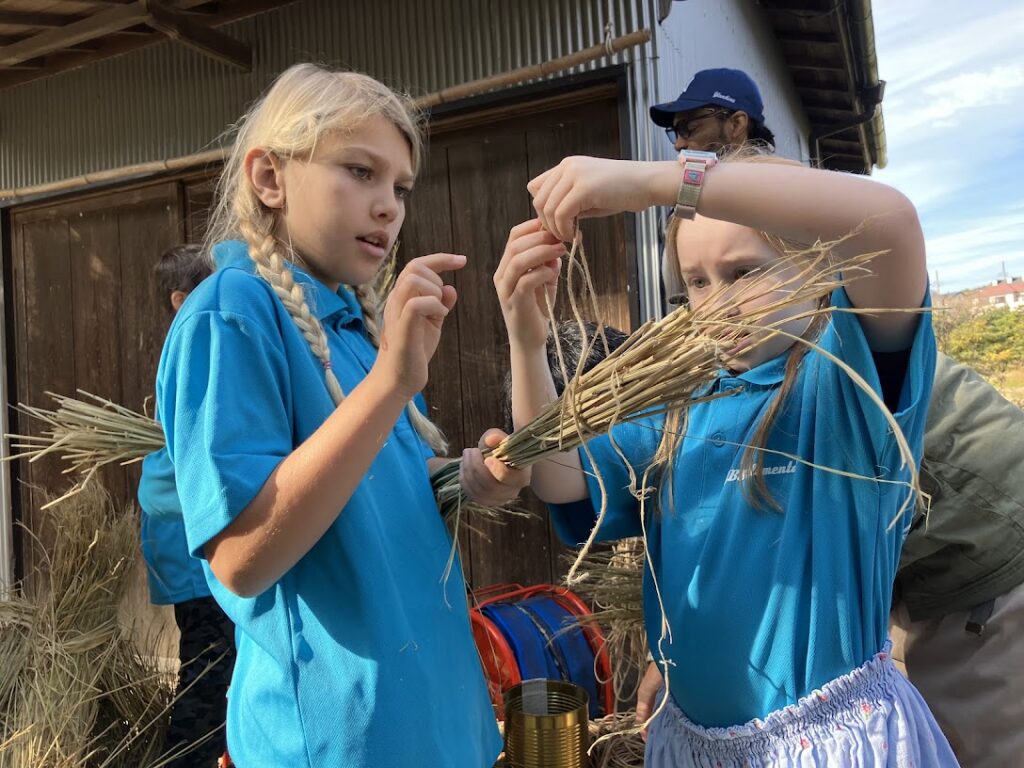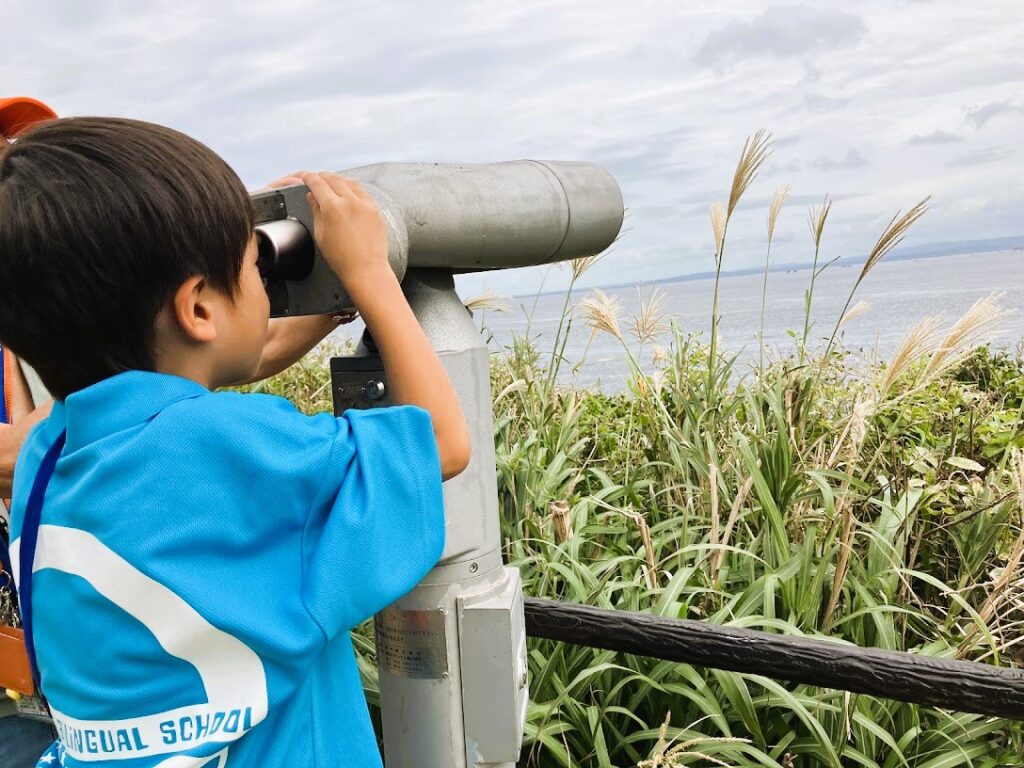
These days, children spend much more time inside, mostly thanks to technology. Compared to the past, more children are not very physically active, sit and watch TV, and do not go out to play and learn.
At Yokosuka Bilingual School (YBS), we want to introduce new worlds and challenges to our students, and a field trip is one of the best tools that we can use to provide every student with real-world experiences. Whether that’s a trip to the local grocery store, waterfront park, a library, a museum, a theater, a community garden or a restaurant, each experience that a student participates in contributes to their understanding of the world. (1)

During field trips, students are able to access tools and environments that are not available at school. Our communities are rich learning laboratories. Field trips make it possible to take students to see an underwater ecosystem at an aquarium, participate in citizen science in a river, use high powered microscopes, see and touch historical artifacts in person and present on a public stage, among hundreds of other things. Each experience solidifies learning and supports important academic concepts. It is so much easier to understand what a cow is when you see it in front of you and are able to touch it as opposed to reading about a cow in a book. Field trips allow students to interact with what they are learning. The experience goes beyond reading a concept in a textbook as children are able to participate in it physically. (2)

The U.S. Travel Association conducted a study with 400 adults (balanced for gender, age, race and income)—half of which had taken a learning trip in their youth, the other half had not—to determine the importance of field trips in education settings. The study found that regardless of gender, ethnicity or socioeconomic status, children who take school trips have better grades (59%), higher graduation rates from high school (95%) and college (63%) and greater income (12% higher annually). In fact, 89% said educational trips had a positive, lasting impact on their education and career because enriching field trips made them more engaged, intellectually curious, and interested in and out of school. (3)
A 2009 student survey showed that 53.78% of students strongly agree that field trips have helped to increase their knowledge base (Rahman & Spafford, 2009). A 2015 study echoes this as it was proven that science-oriented field trips can improve the scores of middle school students in science tests and increase their overall proficiency in the subject matter (Whitesell, 2015). Interestingly, the ones who exhibited the biggest growth are poor students and those belonging to ethnic minorities. Similarly, students are known to retain a significant amount of information when visiting a museum. According to a 2013 study based on tours to the Crystal Bridges Museum in Arkansas, over 70% of the students who visited recollected the historical context behind some of the paintings (Greene et al., 2013). Upon assessing the reaction papers to the tour, the participants displayed a 9% growth in critical thinking, and, once again, the biggest gainers are those from high-poverty institutions, posting a growth rate of 18% (Greene et al., 2013). The tests were conducted weeks after the students visited the museum, thus proving that knowledge from the tour was indeed retained and can be applied to succeeding activities. (4)

For all these reasons, we at YBS conduct field trips so our students can increase their confidence through new experiences and achievements. Through practical new experiences, our students can greaten their choices for their future and increase their strength to live.
(1) EXPLORABLE PLACES, The Benefits Of Field Trips
(2) International Baccalaureate, Field Trips and Their Importance in a Well-Rounded Education
(3) NEA Member Benefits, How Field Trips Boost Students’ Lifelong Success
(4) Research.com, The Educational Value of Field Trips in 2024: Advantages and Disadvantages




